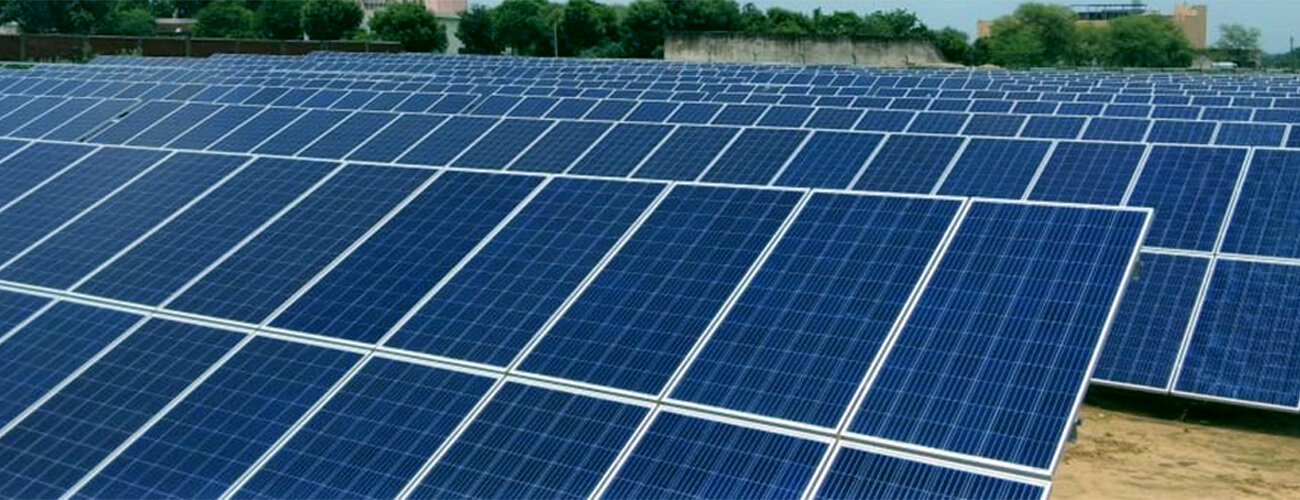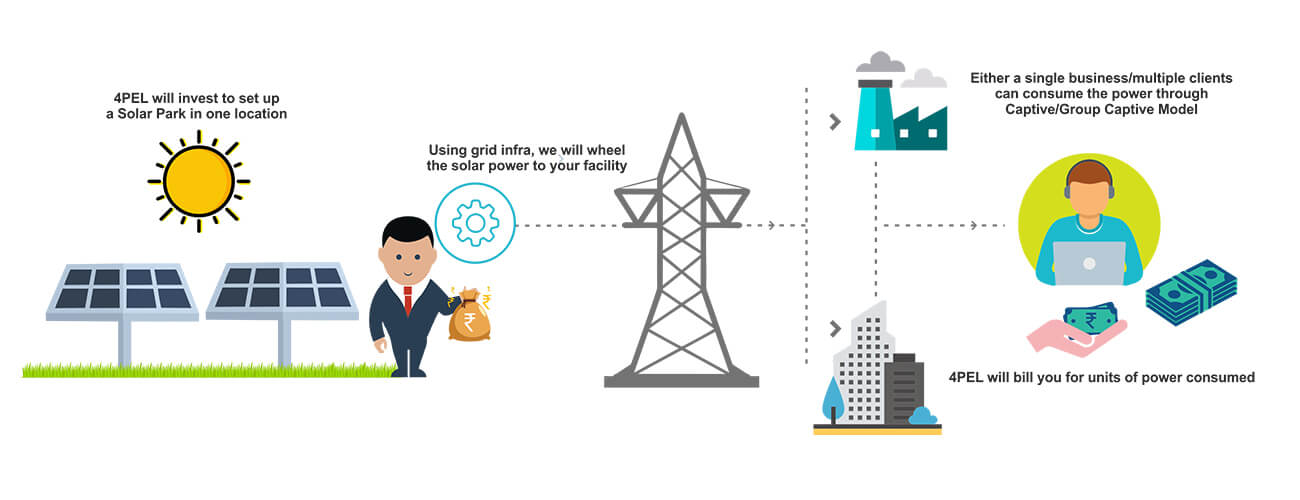

Open Access solar is a great way for large consumers of electricity to not just save on costs, but also make significant progress in meeting RPOs (Renewable Purchase Obligation) and long-term energy transition goals.
In the ‘Group-Captive’ model, a solar project is developed for the collective usage of a group of corporate buyers. Fourth Partner Energy will set up a SPV (Special Purpose Vehicle) for the group captive model, where the group of buyers will hold 26% equity; Together, all buyers collectively will need to consume at least 51% of the power – a PPA is drawn up to ensure clarity on electricity tariffs for 15-25 years.
The adoption of the Group Captive model is witnessing an increasing trend amongst corporates, because the savings per-unit electricity make it a compelling model. The capital investment is minimal, while per-unit tariffs are at least 25-40% cheaper than the grid. It is a great way for corporates to ease into energy transition and procuring from renewables.

Fourth Partner Energy is setting up off-site solar parks in Maharashtra, Uttar Pradesh, Karnataka, Tamil Nadu and Andhra Pradesh. Electricity from these mega-solar parks are wheeled to our customers using the state-owned transmission network.